必修4 Module 3 Body Language and Non-Verbal Communication Reading课件(20张PPT)
文档属性
| 名称 | 必修4 Module 3 Body Language and Non-Verbal Communication Reading课件(20张PPT) |  | |
| 格式 | zip | ||
| 文件大小 | 4.2MB | ||
| 资源类型 | 教案 | ||
| 版本资源 | 外研版 | ||
| 科目 | 英语 | ||
| 更新时间 | 2020-05-16 19:01:13 | ||
图片预览

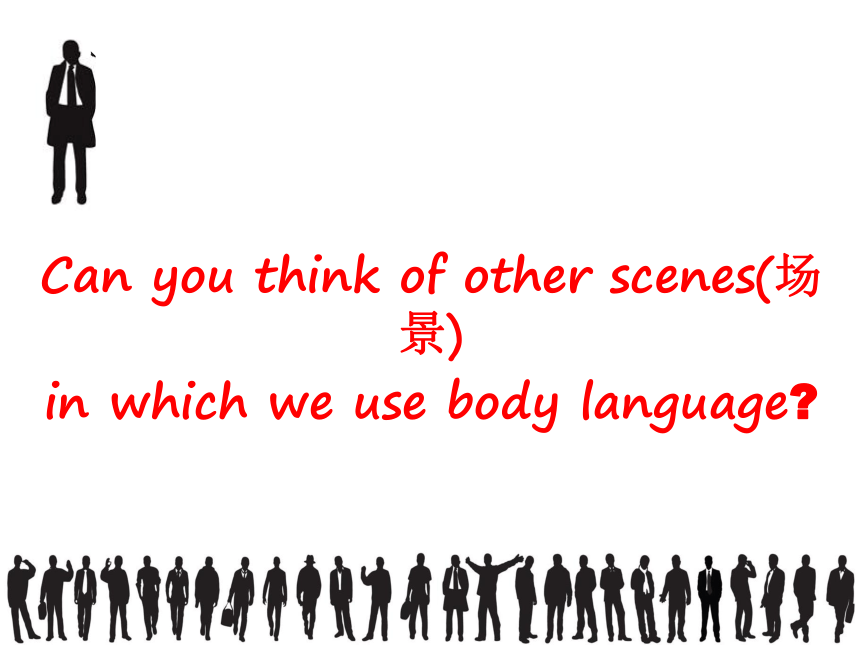
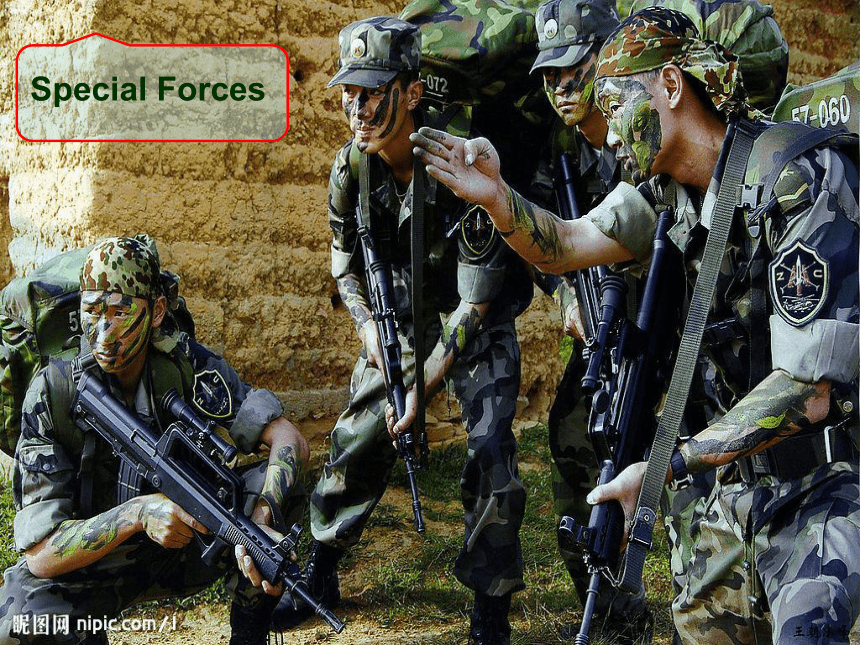
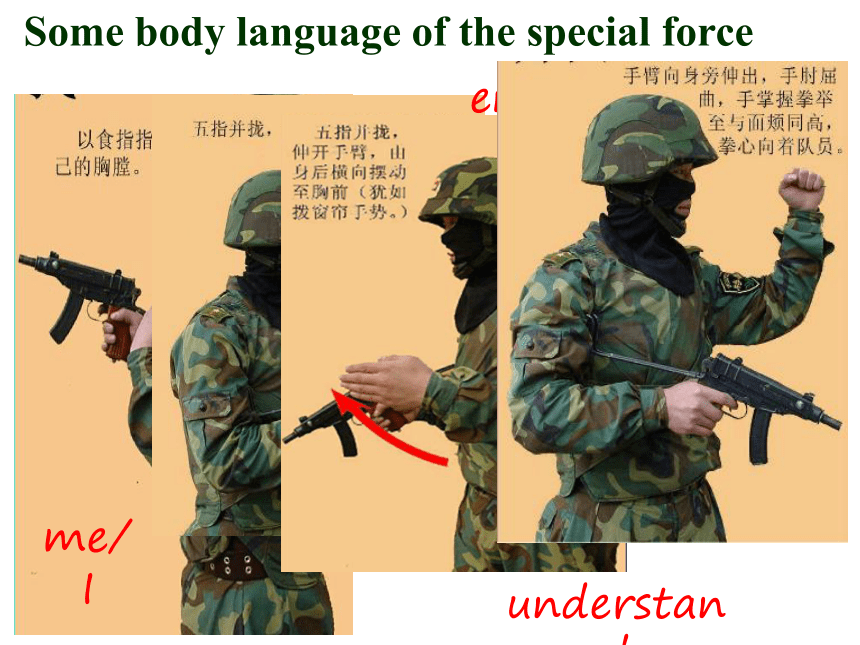
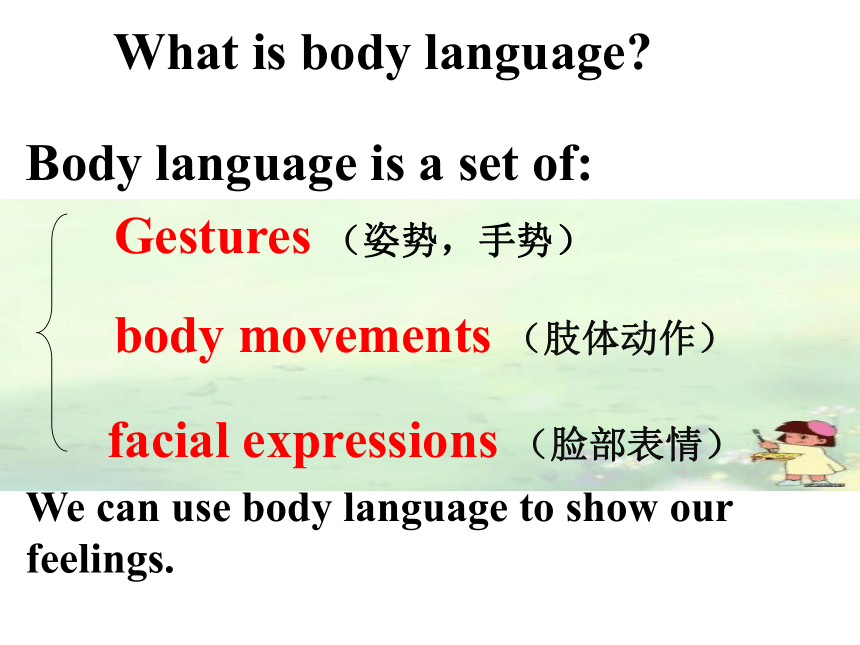
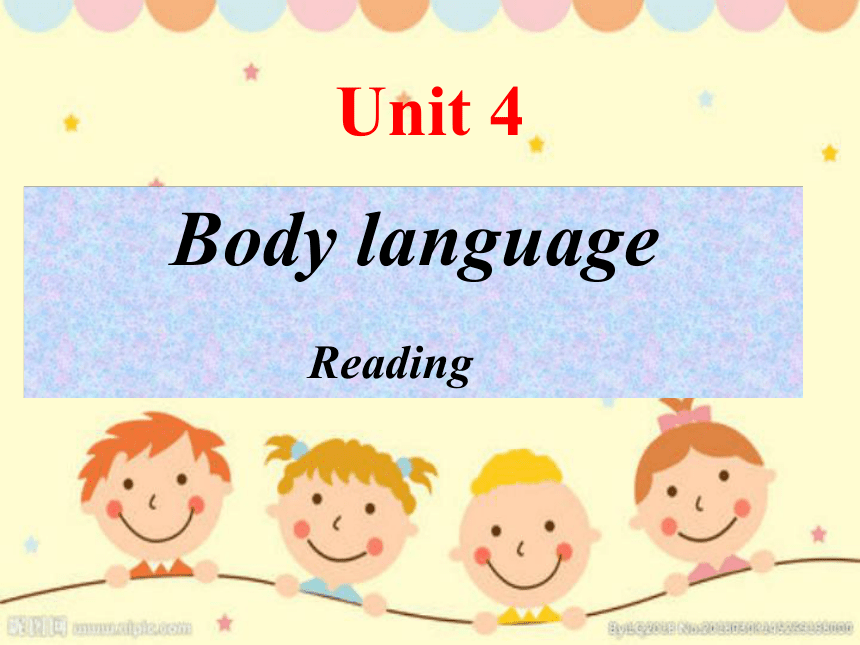


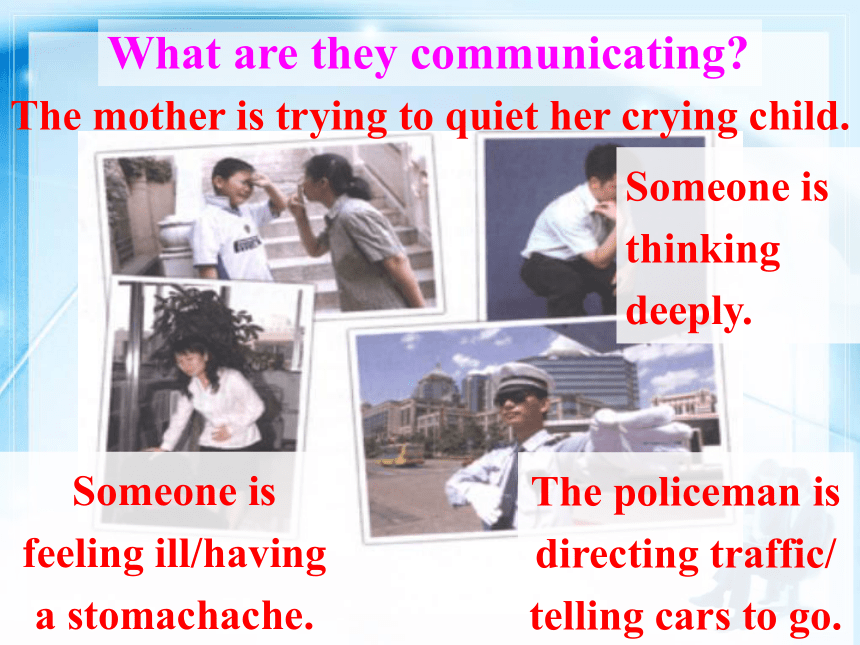
文档简介
(共20张PPT)
Welcome to our class
Can you think of other scenes(场景)
in which we use body language?
A Mysterious Group
Special Forces
me/I
see
enter/go
understand
Some body language of the special force
What is body language?
Body language is a set of:
Gestures (姿势,手势)
body movements (肢体动作)
facial expressions (脸部表情)
We can use body language to show our feelings.
Unit 4
Body language
Reading
学习目标
1. 对肢体语言有一个更好的理解;
2掌握一些阅读技巧 (快速阅读,仔细阅读等);
3.学会如何用肢体语言表达自己.
Pre-reading
What is the purpose(目的) of language?
The purpose of language is to communicate with other people.
What are they communicating?
The mother is trying to quiet her crying child.
Someone is thinking deeply.
Someone is feeling ill/having a stomachache.
The policeman is directing traffic/ telling cars to go.
Reading
COMMUNICATION: NO PROBLEM?
Para 1
Para 2&3
Para 4
Para 5
A. To introduce the students and explain different ways of greeting
B. To meet at Capital International Airport
C. To suggest studying international customs
D. To explain different cultural “body language” in some countries
Task 1 Match the main idea of each part.
Tip: Read the first sentence and the last sentence of each paragraph to get the main idea.
Task 2
Complete the chart from the paragraph 2&3 with your partners.
students Body language Country
Tony Garcia kiss on the cheek
Julia Smith
Akira Nagata
George Cook
Ahmed Aziz
Coulon kiss twice on each face
the writer
Colombia
Britain
Japan
Canada
Jordan
France
China
no touching
bowing
shaking hands
Shaking hands
nodding
shaking hands
Task 3 Fill in the blanks. (高考链接)
English people do not 1._______(usual) stand close to others or touch strangers as soon as they meet. People from Spain, Italy 2._____South American countries approach others closely and 3. _____(be) more likely to touch 4._____(they). Most people around the world now greet each other by5._______(shake) hands, but some cultures use other greetings as well, such as the 6.________(Japan), who prefer to bow.
usually
or
are
them
shaking
Japanese
Summary:
What can we learn from the text?
From the text, we can know that people from the ________culture may greet each other in __________ways.
When in Rome, do as the Romans do.
same
different
入乡随俗。
Role play:
One student act out the body language, and the other guess the words, remember to use adjective (形容词)to express each body language.
“I lost my wallet!”
angry
“I can’t believe what she said. That is so unfair.”
“I got an A in English!”
happy
“I don’t know what to do.”
confused
Homework
Team work: Discuss the importance of body language.
Get ready to retell the text in your own words.
Welcome to our class
Can you think of other scenes(场景)
in which we use body language?
A Mysterious Group
Special Forces
me/I
see
enter/go
understand
Some body language of the special force
What is body language?
Body language is a set of:
Gestures (姿势,手势)
body movements (肢体动作)
facial expressions (脸部表情)
We can use body language to show our feelings.
Unit 4
Body language
Reading
学习目标
1. 对肢体语言有一个更好的理解;
2掌握一些阅读技巧 (快速阅读,仔细阅读等);
3.学会如何用肢体语言表达自己.
Pre-reading
What is the purpose(目的) of language?
The purpose of language is to communicate with other people.
What are they communicating?
The mother is trying to quiet her crying child.
Someone is thinking deeply.
Someone is feeling ill/having a stomachache.
The policeman is directing traffic/ telling cars to go.
Reading
COMMUNICATION: NO PROBLEM?
Para 1
Para 2&3
Para 4
Para 5
A. To introduce the students and explain different ways of greeting
B. To meet at Capital International Airport
C. To suggest studying international customs
D. To explain different cultural “body language” in some countries
Task 1 Match the main idea of each part.
Tip: Read the first sentence and the last sentence of each paragraph to get the main idea.
Task 2
Complete the chart from the paragraph 2&3 with your partners.
students Body language Country
Tony Garcia kiss on the cheek
Julia Smith
Akira Nagata
George Cook
Ahmed Aziz
Coulon kiss twice on each face
the writer
Colombia
Britain
Japan
Canada
Jordan
France
China
no touching
bowing
shaking hands
Shaking hands
nodding
shaking hands
Task 3 Fill in the blanks. (高考链接)
English people do not 1._______(usual) stand close to others or touch strangers as soon as they meet. People from Spain, Italy 2._____South American countries approach others closely and 3. _____(be) more likely to touch 4._____(they). Most people around the world now greet each other by5._______(shake) hands, but some cultures use other greetings as well, such as the 6.________(Japan), who prefer to bow.
usually
or
are
them
shaking
Japanese
Summary:
What can we learn from the text?
From the text, we can know that people from the ________culture may greet each other in __________ways.
When in Rome, do as the Romans do.
same
different
入乡随俗。
Role play:
One student act out the body language, and the other guess the words, remember to use adjective (形容词)to express each body language.
“I lost my wallet!”
angry
“I can’t believe what she said. That is so unfair.”
“I got an A in English!”
happy
“I don’t know what to do.”
confused
Homework
Team work: Discuss the importance of body language.
Get ready to retell the text in your own words.
